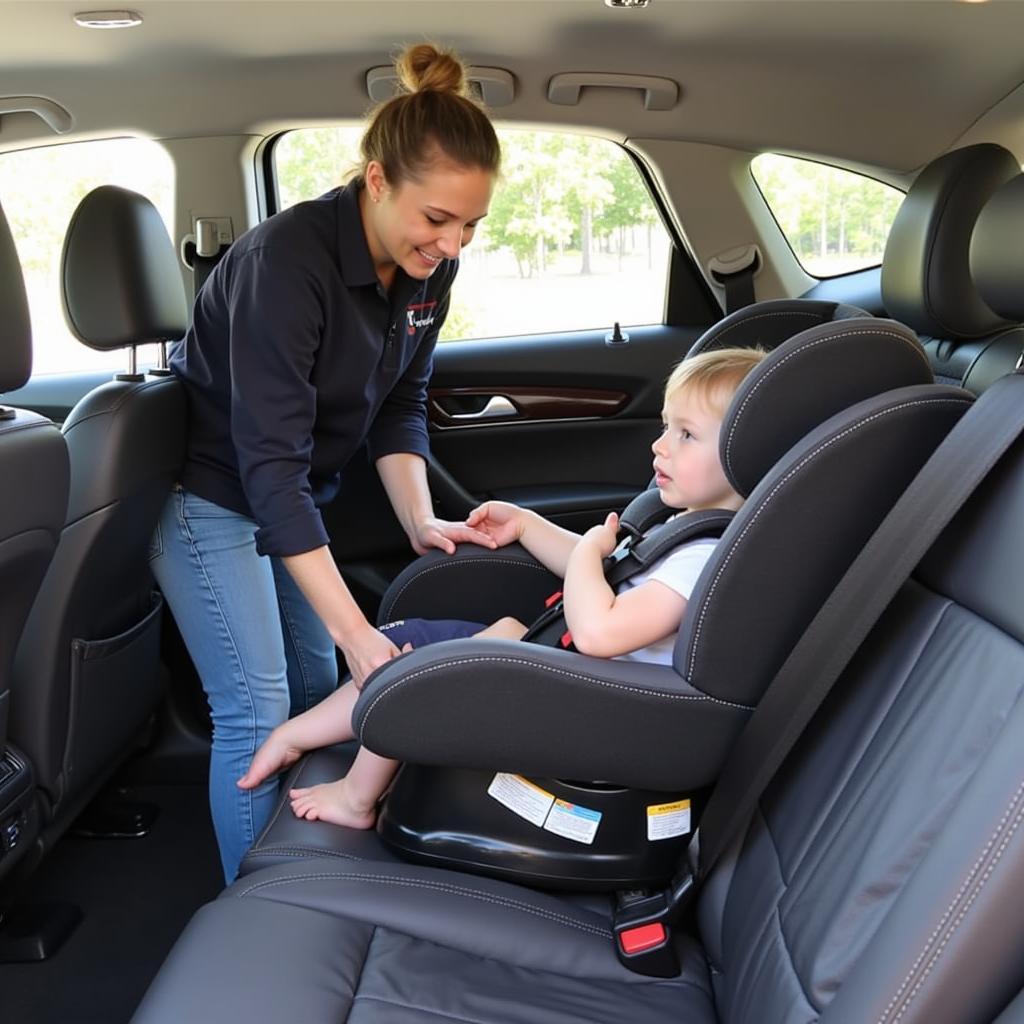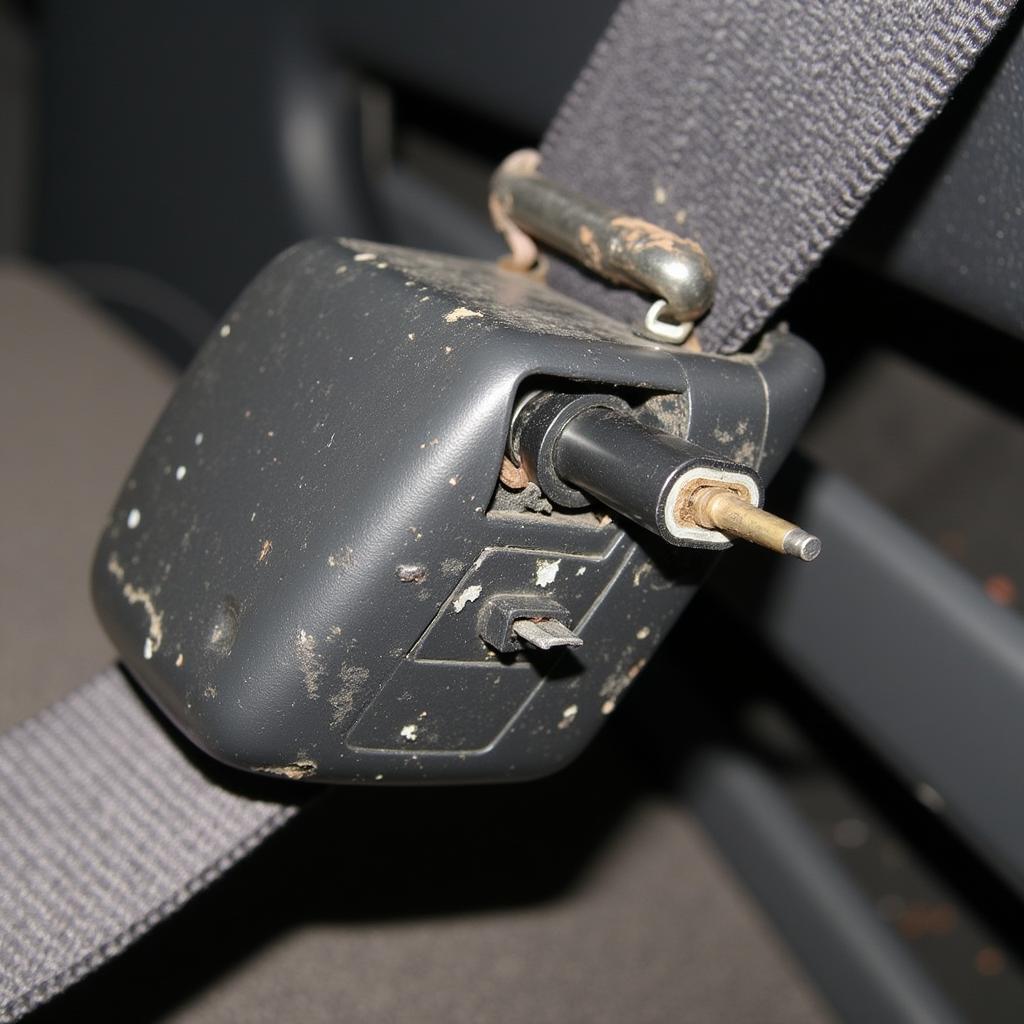A baby car seat warning light on your dashboard can be a cause for concern for any parent. It signals that there might be an issue with the installation or functionality of your child’s car seat, potentially putting their safety at risk. This comprehensive guide will delve into the common causes of car seat warnings, provide troubleshooting steps, and offer expert advice on ensuring your precious cargo is always secure.
Why is My Car Seat Warning Light On?
The most common reason for a baby car seat warning light is a problem with the way the seat is installed in your vehicle. Even a slight misalignment or loose connection can trigger the sensor and illuminate the warning light. Here’s a breakdown of the typical culprits:
- Incorrect Seat Belt Routing: Car seats are designed with specific paths for the seat belt to pass through, ensuring a secure fit. Double-check your car seat manual and your vehicle’s owner’s manual for correct routing.
- Loose Latch Connection: The Lower Anchors and Tethers for Children (LATCH) system provides a quick and secure way to install car seats. If the latch connectors aren’t properly clicked into the anchors, the warning light may activate.
- Improper Seat Belt Tightening: When using a seat belt to install the car seat, it needs to be pulled tight and locked in place. Any slack can compromise the seat’s stability.
- Weight Limit Exceeded: Every car seat has weight and height limits. If your child has outgrown their seat, the warning system might be indicating it’s time for a new one.
- Faulty Sensor: While less common, there’s a possibility the sensor itself might be malfunctioning.
 Car Seat Sensor Malfunction
Car Seat Sensor Malfunction
Troubleshooting Car Seat Warning Lights: A Step-by-Step Guide
Don’t panic if your baby car seat warning light comes on. Here’s a practical guide to help you troubleshoot and resolve the issue:
- Consult Your Manuals: Your car seat and vehicle manuals are your best resources. They contain detailed instructions, diagrams, and troubleshooting tips specific to your models.
- Reinstall the Car Seat: Start by uninstalling the car seat completely. Pay close attention to how it was connected and any areas where there might have been looseness. Then, following the manufacturer’s instructions carefully, reinstall the car seat, ensuring all connections are secure and the seat belt or LATCH system is properly engaged.
- Check for Movement: Once installed, give the car seat a firm wiggle at the base. There should be minimal movement (less than one inch) at the belt path.
- Inspect the Seat Belt or LATCH: Ensure the seat belt is routed correctly and locked in place. If using LATCH, make sure the connectors are fully clicked into the anchors and there’s no slack in the straps.
- Verify Weight and Height Limits: Confirm your child still falls within the specified weight and height limits for the car seat.
- Check for Recalls: Visit the National Highway Traffic Safety Administration (NHTSA) website or the manufacturer’s website to check for any recalls related to your car seat or vehicle model.
 Reclining a Car Seat for Infant Safety
Reclining a Car Seat for Infant Safety
When to Seek Professional Help
If you’ve followed the troubleshooting steps and the warning light persists, it’s advisable to seek professional assistance. A certified car seat technician or a qualified mechanic can diagnose the issue and ensure your car seat is installed correctly.
Beyond the Basics: Advanced Safety Tips
- Registration is Key: Register your car seat with the manufacturer. This ensures you receive timely notifications about recalls or safety updates.
- Avoid Aftermarket Products: Only use accessories or add-ons that are specifically approved for your car seat model. Unapproved products can interfere with the seat’s performance in a crash.
- Check for Wear and Tear: Regularly inspect your car seat for any signs of damage, such as frayed straps, loose parts, or cracks.
- Stay Updated: Car seat safety standards and recommendations evolve. Stay informed about the latest guidelines from organizations like the NHTSA and the American Academy of Pediatrics.
 Car Seat Safety Check
Car Seat Safety Check
FAQs: Common Questions About Baby Car Seat Warnings
Q: Can I ignore the warning light if I think the car seat is installed correctly?
A: No, it’s crucial not to ignore a car seat warning light. It indicates a potential safety risk.
Q: How often should I check my car seat installation?
A: It’s recommended to check your car seat installation every time you use it, especially if the seat has been removed or adjusted.
Q: What should I do if my car seat has been in an accident?
A: Even in a minor accident, it’s essential to replace your car seat. The impact can compromise its structural integrity.
A Final Word on Car Seat Safety
A baby car seat warning light, while sometimes frustrating, is a crucial safety feature. By understanding its causes and taking proactive steps to address them, you can ensure your child travels safely and securely. Remember, proper car seat installation is not just about following the rules; it’s about protecting what matters most.


